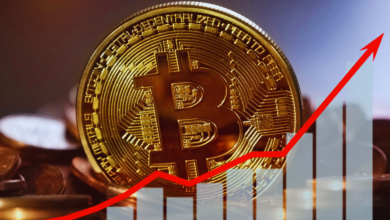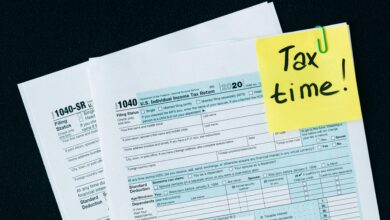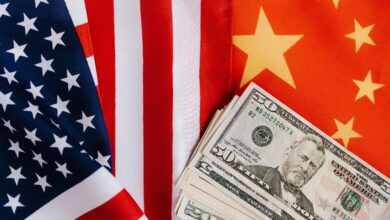Trump Criticizes Fed Chairman Jerome Powell, Calls for His Exit Amid Rising Tensions Over Interest Rates and Economic Policy

Washington, D.C. (WE) — In an escalating war of words between U.S. President Donald Trump, and Federal Reserve Chairman Jerome Powell, Trump recently voiced frustration over Powell’s stance on interest rates. The president, in a social media post on Thursday, said Powell’s “termination cannot come fast enough,” amplifying tensions with the head of the central bank. This comes as Powell faces scrutiny from the Trump administration, particularly after the Fed’s decision to keep interest rates unchanged in its efforts to combat inflation. The attack highlights the ongoing political and economic battles surrounding U.S. monetary policy and the Federal Reserve’s role in shaping the country’s economic future.
Trump’s comments, while harsh, do not hold the power to directly force Powell out of his position. Powell’s term as Fed Chair extends through May 2026, and his removal is only possible under extreme circumstances, such as misconduct, under U.S. law. The Federal Reserve, as an independent agency, operates free from political influence, a principle Powell reiterated during his speech at the Economic Club of Chicago earlier in the week.
Tensions Escalate Over Interest Rates and Economic Policy
On Wednesday, Powell, in his speech, emphasized the Fed’s commitment to making decisions based solely on what is best for the American people, without bowing to political pressure. “That’s the only thing we’re ever going to do,” Powell said. “We’re never going to be influenced by any political pressure. People can say whatever they want. That’s fine, that’s not a problem. But we will do what we do strictly without consideration of political or any other extraneous factors.”
This remark is seen as a direct response to Trump’s repeated calls for aggressive interest rate cuts. Trump has argued that lower rates would stimulate economic growth, particularly in light of his administration’s trade policies. However, Powell’s stance has been that the Fed must remain focused on tackling inflation, which is the central bank’s primary mandate, even if that means keeping rates high.
Trump has long been vocal about his dissatisfaction with Powell, who was appointed by the president in 2017. However, in 2022, Powell’s term was extended by President Joe Biden, further adding to Trump’s frustration. This prolonged dissatisfaction led to the president’s Thursday remarks, where he once again suggested that Powell’s departure would be in the best interest of the country.
Trump’s Economic Policies and Powell’s Response
The disagreement between Trump and Powell comes as a key legal case is underway at the U.S. Supreme Court. The case could shape presidential power over independent agencies like the Federal Reserve. It stems from Trump’s controversial firings of officials from other independent agencies. While the Court has allowed these firings, it is considering whether the president can dismiss heads of independent agencies like the Fed.
This legal case could have significant implications for the Fed’s independence. If the Court rules that the president has the power to remove Fed officials, it could change U.S. economic policy.
Krishna Guha, an analyst at investment bank Evercore ISI, highlighted the potential consequences of such a ruling. He wrote, “It is difficult to overstate the consequences at this stressed moment of a Court ruling that found that President Trump… does have the authority to dismiss the heads of independent agencies and did not establish a clear carve-out for the Fed.” If the ruling allows the president to remove Fed officials, it could invite more political interference in the central bank’s decision-making. Many economists and policymakers warn this could undermine the Fed’s independence.
The Legal Debate: Can Trump Remove Powell?
The disagreement between Trump and Powell comes as a key legal case is underway at the U.S. Supreme Court. The case could shape presidential power over independent agencies like the Federal Reserve. It stems from Trump’s controversial firings of officials from other independent agencies. While the Court has allowed these firings, it is considering whether the president can dismiss heads of independent agencies like the Fed.
This legal case could have significant implications for the Fed’s independence. If the Court rules that the president has the power to remove Fed officials, it could change U.S. economic policy.
Krishna Guha, an analyst at investment bank Evercore ISI, highlighted the potential consequences of such a ruling. He wrote, “It is difficult to overstate the consequences at this stressed moment of a Court ruling that found that President Trump… does have the authority to dismiss the heads of independent agencies and did not establish a clear carve-out for the Fed.” If the ruling allows the president to remove Fed officials, it could invite more political interference in the central bank’s decision-making. Many economists and policymakers warn this could undermine the Fed’s independence.
Trump’s Strategy: A Replacement for Powell?
In addition to his public calls for Powell’s removal, reports suggest that Trump has spoken with former Federal Reserve Governor Kevin Warsh about replacing Powell. According to The Wall Street Journal, Warsh had been considered for the Fed Chair position in 2018. He has reportedly advised Trump against replacing Powell. However, Trump’s frustration with Powell continues. It remains unclear whether the president will continue efforts to remove the Fed chair in the coming months.
Warsh, known for his hawkish views on monetary policy, could align more with Trump’s economic agenda. However, Powell’s strong stance on maintaining the Federal Reserve’s independence is why he resists calls to step down, despite pressure from the president.
Read More:
- Fed Chair Powell Delivers Stark Warning on Economic Fallout From Trump’s Tariff Policies
- Cambodia Seeks China’s Financial Backing as Xi Visits Amid U.S. Tariff Tensions
The State of the U.S. Economy
While Powell’s future at the helm of the Federal Reserve remains uncertain, the broader economic picture is under scrutiny. At the start of Trump’s second term, the U.S. economy was relatively stable. Unemployment was low, and inflation was moving toward the Fed’s 2% target. However, the imposition of tariffs and other disruptions have created challenges for policymakers.
A study by Yale University’s Budget Lab estimated that Trump’s trade policies led to a loss of $4,900 in purchasing power for the average U.S. household. This has put significant pressure on families, especially as prices for essentials like groceries continue to rise.
The uncertainty surrounding U.S. monetary policy and the Fed’s actions is fueling volatility in the stock market. Investors are reacting to the ongoing battle between Trump and Powell. Powell’s cautious approach to rate cuts, combined with trade tensions, has led to market fluctuations. Investors are trying to predict the direction of U.S. economic policy.
Looking Ahead: The Future of the Federal Reserve
As tensions continue to rise between President Trump and Fed Chairman Jerome Powell, the future of U.S. monetary policy remains uncertain. While Powell is not in immediate danger of being removed from his position, the ongoing legal challenges and political pressure surrounding the Fed could have lasting implications for the central bank’s independence.
In the coming months, it will be critical to watch how the Supreme Court rules on the case regarding presidential power over independent agencies. Additionally, the trajectory of U.S. economic policy—particularly with respect to tariffs, inflation, and interest rates—will play a pivotal role in shaping the economic landscape for years to come.







